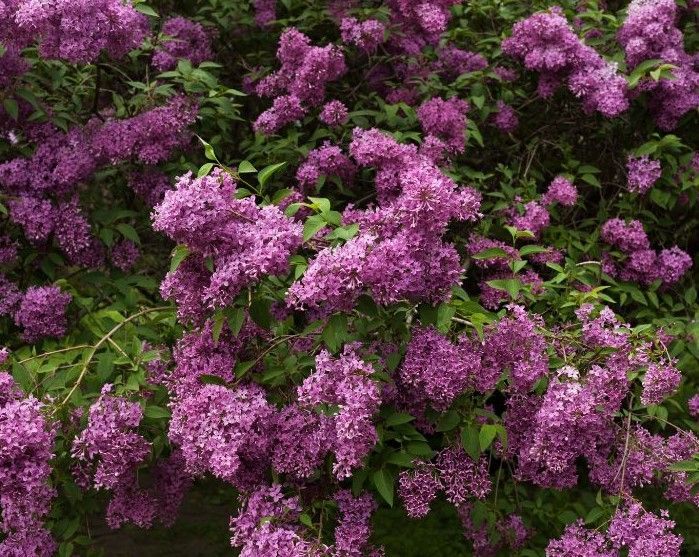Can Ivy Be Harmful to Trees?
The short answer: Yes, if left unchecked.
Ivy is often admired for its lush, evergreen foliage and ability to add a timeless charm to any landscape. Its rapid growth makes it an attractive ground cover, while its ability to climb walls and trees creates an enchanting, natural look in gardens and outdoor spaces. Many homeowners appreciate ivy for its low-maintenance appeal and how it effortlessly enhances the aesthetics of fences, trellises, and tree trunks.
However, despite its beauty, ivy can pose serious risks to your trees and surrounding plants. As ivy climbs and thickens, it can smother tree bark, weaken branches, and compete with trees for essential nutrients (classifying several species as invasive). Over time, what starts as a charming addition to your landscape can lead to serious damage—ultimately harming, or even killing, your trees and other cherished landscape plants.
Why is Ivy Harmful to Trees?
Ivy starts by growing along the ground and uses its aerial rootlets to cling to vertical surfaces like trees, walls, and buildings, spreading quickly. As it grows, ivy can cover large areas of buildings or trees, often causing surface damage and other issues:
1. Ivy can block sunlight, preventing growth and suffocating the canopy.
Ivy forms a dense, thick layer of leaves over the tree’s branches and trunk, which obstruct the tree's ability to perform photosynthesis and generate its own energy. Over time, this can lead to the tree becoming weakened, stunted, and more susceptible to stressors such as disease, pests, and environmental changes. In severe cases, the tree might not receive enough light to sustain itself, leading to its eventual decline or death.
2. Ivy competes for water and nutrients.
Both the tree and the ivy rely on water and essential nutrients, such as nitrogen, phosphorus, and potassium, to survive and thrive. As the ivy grows, its root system can spread extensively, often outcompeting the tree’s roots for these critical resources. This competition for resource can weaken the tree, causing it to become malnourished, stressed, and more vulnerable to diseases, pests, and environmental pressures. Additionally, trees with reduced access to water and nutrients may struggle to develop strong root systems, leading to poor growth, reduced foliage, and a weakened ability to recover from damage. This can ultimately compromise the health and longevity of the tree.
3. Ivy can add unnecessary weight to branches.
As ivy climbs and spreads, it thickens and becomes heavier over time. This added weight puts stress on the tree's limbs, making them more susceptible to breaking under their own weight or during external forces like wind or snowstorms. The weight of the ivy can also hinder the tree's natural growth by restricting the movement of branches, increasing the risk of falling limbs, which can damage the tree further or pose safety hazards to nearby structures or people. In extreme cases, the weight of the ivy may topple the tree entirely, especially if the tree is already weakened by other factors.
4. Ivy can harbor pests and disease.
Ivy creates a shady, moist habitat that attracts various insects such as aphids, mites, and scale. These pests can feed on the tree's leaves, sap, or bark, weakening the tree and making it more vulnerable to further infestations. Ivy’s thick growth traps moisture, which promotes the growth of fungi and bacteria. This can lead to fungal infections like cankers or rot, which may spread to the tree, causing serious health issues. These diseases can weaken the tree’s structure and reduce its ability to absorb nutrients. Ivy often hides signs of tree damage, such as cracks, decay, or insect infestations. This makes it difficult for tree owners to detect and address problems early, allowing pests or diseases to go untreated, worsening the tree’s condition.
5. Ivy can damage tree bark over time.
As ivy climbs the tree, it attaches itself using small aerial roots, called adhesive rootlets, or by wrapping around the trunk. Over time, this can lead to several issues. The ivy’s rootlets can penetrate the bark or cling tightly to it, causing cracks and peeling. This weakens the bark, which is vital for protecting the tree from environmental stress, pests, and diseases. Once the bark is compromised, the tree becomes more susceptible to infections and insect infestations. Open wounds on the bark allow fungi and bacteria to enter the tree, leading to potential decay or rot. Ivy can also smother the tree's bark, preventing it from regenerating properly. The thick covering blocks airflow and traps moisture, creating conditions where rot can develop, further weakening the tree. By damaging the bark and the underlying cambium layer, ivy can slow down the tree’s growth, as the cambium is essential for transporting nutrients and water between the roots and the leaves.
6. Ivy creates lasting effects on the health of your trees.
Ivy gradually saps the tree of its vitality, leading to a range of detrimental effects including poor health, structural instability, and potentially even death if the issue is not addressed in a timely manner. As ivy wraps around the trunk and branches, it competes for nutrients and water, weakening the tree's overall strength and resilience. Trees that fall victim to pests, disease, or declining health—often exacerbated by a lack of sunlight and reduced photosynthesis—pose a serious risk not only to their own survival but also to human safety and surrounding structures. The weakened trees may become unstable, making them more prone to falling during storms or high winds, thus increasing hazards for nearby homes, roads, and pedestrians.
How to Remove and Manage Overgrown Ivy on Trees
- Prepare your tools. Before starting, gather the necessary tools, including pruning shears or loppers, garden gloves (ivy can cause skin irritation), a small hand saw (for thicker vines), and garden rake or hoe (for ground ivy).
- Cut the ivy at the base. Using your pruning shears or loppers, cut the ivy vines at the base of the tree, about 3 to 4 feet above ground level. Focus on severing all vines circling the trunk. Cutting this section will stop the flow of nutrients and water to the ivy climbing the tree.
- Remove ivy from the ground. Once you've cut the ivy on the tree, start clearing the ivy from the ground around the tree base. Use a garden hoe or rake to pull up the vines, trying to get as much of the root system as possible to prevent regrowth. Keep the ground around the tree ivy-free to prevent it from reattaching.
- Carefully remove the ivy from the tree. After cutting the ivy at the base, avoid pulling the vines off the tree immediately. Ivy that has been growing on a tree for a long time can damage the bark if pulled off forcibly. Instead, allow the ivy above your cut to die naturally over a few weeks. Once it dries out, it will be easier to remove by hand with less risk to the tree.
- Monitor for regrowth. Ivy is persistent, so you'll need to regularly check the tree and surrounding area for new growth. Re-cut any new vines that begin to climb the tree, and remove young ivy shoots from the ground as they appear.
- Dispose of the ivy properly. After removing the ivy, dispose of it carefully. Don’t compost it, as it can take root and spread. Instead, bag it for municipal waste collection or burn it if permitted in your area.
- Maintain ivy-free zones. To prevent ivy from returning, keep the area around the tree clear of ivy and other fast-growing plants. Mulching around the tree base can help deter new ivy growth. Regularly inspect your trees and maintain a barrier of at least a few feet from the trunk to ensure the ivy doesn’t reestablish.
Alternative Ivy Control Methods
The Ground Cover and Mulching Method
- Cut, remove, and dispose of the ivy. Use the steps outlined previously to effectively remove as much of the vines as possible while reducing the chance of regrowth.
- Prepare the soil. Rake the soil to remove any remaining roots, and lightly till it if needed. Make sure the soil is loose enough for planting cover crops.
- Select and plant non-invasive ground cover. Choose cover crops like clover, wildflowers, or ornamental grasses that suit your region. Plant seeds or vegetation evenly over the prepared area, making sure to follow spacing and depth guidelines based on the type of cover crop you choose.
- Apply mulch. Spread a thick layer of organic mulch (such as wood chips, straw, or leaves) over the planted area, ensuring a depth of at least 3-4 inches to suppress any remaining ivy roots. Keep the mulch away from the base of trees or plants to prevent rot and girdling roots.
- Water cover crops. Water the newly planted ground cover consistently for the first few weeks to ensure proper establishment.
- Monitor and reapply mulch. As the cover crops grow, monitor for weeds or ivy attempting to return and prune back as necessary. Reapply mulch every 6-12 months to maintain a thick barrier against ivy regrowth and keep the soil healthy.
- Continue to check the area regularly for any signs of ivy. Replace or reseed the ground cover as needed to ensure it thrives and prevents ivy from coming back.
The Maintenance Method
- Evaluate the ivy growth. Assess the area to understand the extent of ivy coverage. Identify where the ivy is growing (on the ground, trees, walls, or fences) and the density of the growth. Determine whether the ivy is causing any damage to structures or trees by looking for signs of stress or girdling (tight vines restricting growth).
- Plan a regular pruning schedule. Ivy grows quickly and can become invasive if left unchecked. To maintain control, plan to prune back the ivy at least 2-3 times per year, ideally in spring, summer, and fall. For ivy growing on walls or fences, prune back whenever the vines reach undesirable areas, such as windows, doors, or gutters.
- Use the right tools. Use pruners, shears, or hedge trimmers to cut back the ivy. For thicker vines, loppers may be needed. Wear gloves and long sleeves to protect your skin from irritation, as some people may be sensitive to ivy sap.
- Trim ivy around trees and structures. Keep a 2-3 foot clearance around the base of trees to prevent the ivy from girdling and damaging the bark. Ivy on buildings or fences should be regularly cut back to avoid damage to the surfaces, such as cracks in mortar or wood rot.
- Prune ground ivy. Use a garden fork, weeder, or your hands to pull back ivy spreading across the ground. Focus on areas where ivy is encroaching on other plants or covering too much ground. Be thorough in removing vines that are trying to spread into unwanted areas, such as garden beds or lawns.
- Dispose of pruned ivy. Bag and dispose of the pruned ivy, especially if it’s been removed from a sensitive area like tree trunks. Avoid composting ivy, as it can easily re-root. Burning or bagging ivy and taking it to a local waste facility is recommended to prevent regrowth.
- Control ivy near sensitive plants. Ivy can outcompete other plants, so be mindful of its growth near flower beds, shrubs, or smaller plants. Use barriers like landscape edging to keep the ivy from spreading into these areas.
- Mulch around trees and other plants. Apply mulch around trees and plants to create a natural barrier that discourages ivy from spreading into critical root zones.
- Monitor ivy growth regularly. Check the ivy’s growth every 6-8 weeks to catch any unwanted spreading early. Trim back small sections as needed to maintain control between scheduled prunings.
References:
https://www.gardeningetc.com/news/is-ivy-bad-for-trees
https://www.gardeningknowhow.com/ornamental/groundcover/english-ivy/english-ivy-tree-damage.htm
Images - Canva
Check out the latest...








